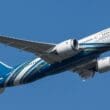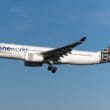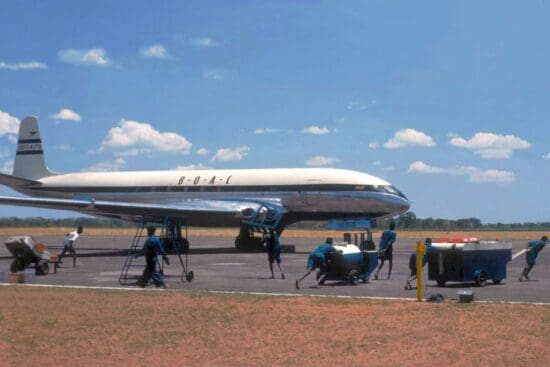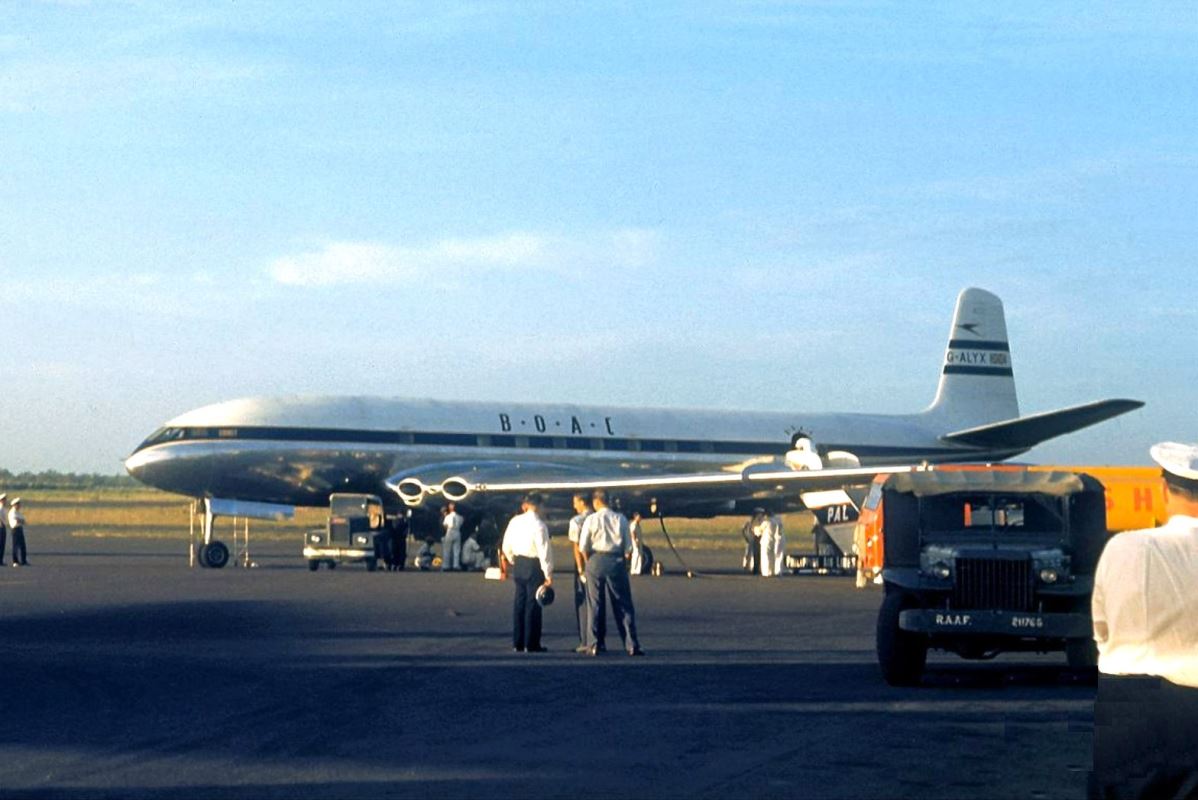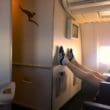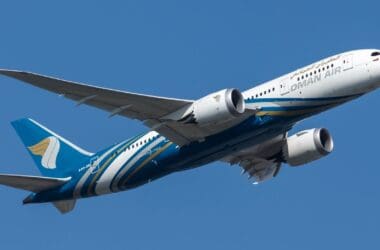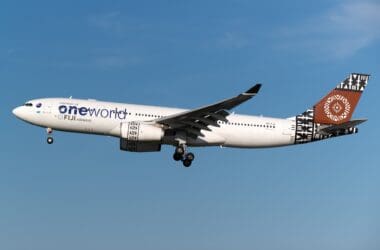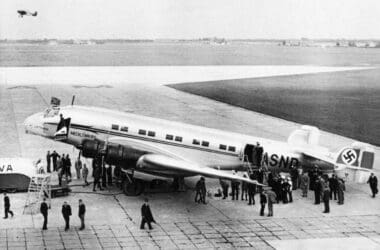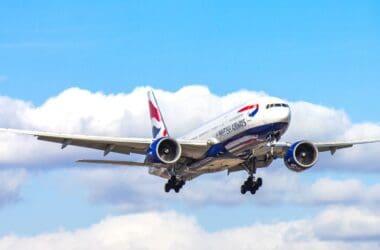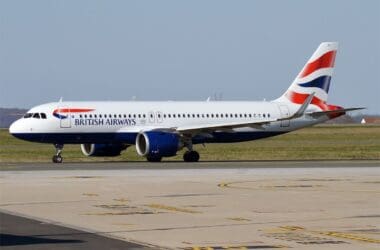The de Havilland Comet 1 was the world’s first passenger airliner powered by jet engines. Four de Havilland Ghost turbojets kept it aloft and it introduced an entirely new era of flying that we continue to enjoy today.
First flying from Hatfield Aerodrome on 27 July 1949, it went through rigorous testing before entering airline service with BOAC. The inaugural service was from London Heathrow to Johannesburg on 2 May 1952, starting the jet age.
Comet 1 Flight Video
British Pathé have a large archive of newsreels and some of them are available online. This five minute presentation is a wonderful birds eye view of flying back in the early 1950s. Complete with plummy British narration, you get to really experience the whole journey.
From England, the flight passes through the Alps, over France, to Rome, Lake Victoria, Entebbe, Livingstone and finally Jo’burg. Along the way you get to see the exterior of the plane, the interior, the flight deck and of course some of the cabin service.
A Little About The Comet 1
The Comet 1 could seat 36-44 passengers and was similar in length to today’s Airbus A318. The rectangular picture windows with curves at the corners were of a generous size, providing passengers with decent views.
Overall Thoughts
It is great to see the de Havilland Comet 1 in action. What strikes me the most is that not all that much has changed today. Sure, the seats are fancier and we have inflight entertainment at every seat on long-haul services, but it’s not all that different.
Of course, the initial version of the Comet suffered from some accidents that ended up being beneficial to the entire industry. What could have been had these not occurred… we might be flying around in British aircraft today. An upgraded and much safer version, the de Havilland Comet 4, entered service in 1958 and saw many years of service around the world.
What did you think of the video? Do you agree that things are pretty similar today? Thank you for reading and if you have any comments or questions, please leave them below.
Like planes? See my “Does anyone remember” series.
Flight reviews your thing? Mine are all indexed here.
Follow me on Facebook, Twitter and Instagram.
Comet 1 colour images via Zoggavia.
Cutaway via This Day In Aviation.


